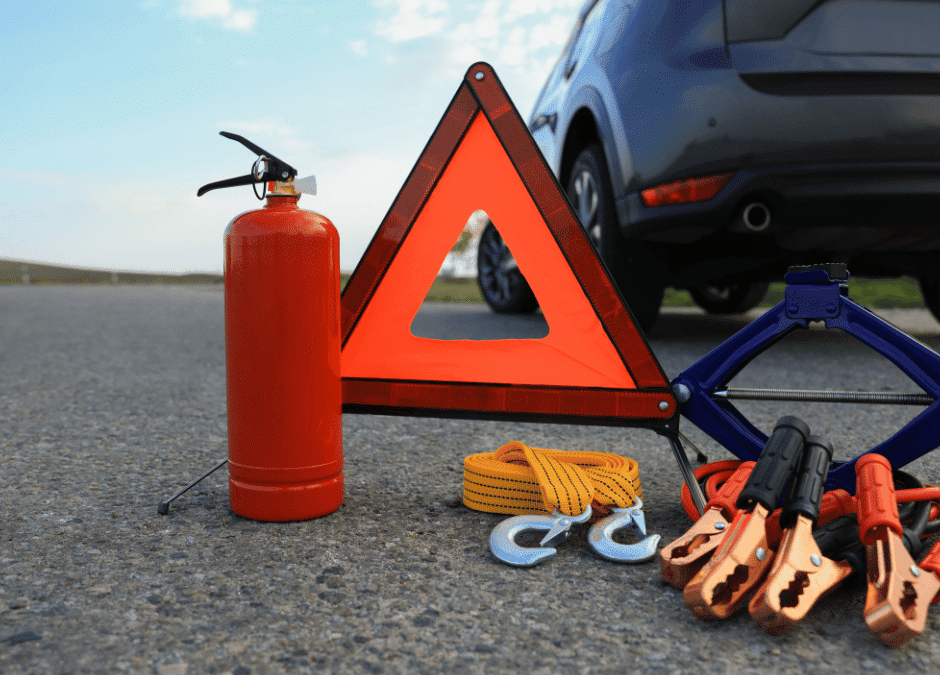A well-equipped car emergency kit is your first line of defense in unexpected roadside situations. Such kits provide tools and supplies to address minor mechanical issues and safety gear to protect you until help arrives. Fayetteville Towing recommends that all drivers maintain a kit tailored to their specific needs and travel habits, which can significantly reduce the danger and discomfort during automotive emergencies. Keeping this kit updated and ready can transform a potentially dangerous situation into a manageable inconvenience.
Essential Safety Items: Non-Negotiables for Every Kit
A comprehensive car emergency kit should begin with a few essential safety items that could mean the difference between a minor disruption and a major crisis. These items, including a robust first aid kit, a reliable fire extinguisher, and high-visibility warning triangles, are essential for addressing injuries and alerting other motorists to your presence. Ensure these items are easily accessible in your vehicle, and familiarize yourself with their use. Regular reviews and updates of these items ensure they are functional when needed, offering peace of mind while on the road.
Tools and Equipment: Must-Haves for Roadside Repairs
Equipping your vehicle with essential tools can drastically improve your ability to handle common roadside issues independently. Besides jumper cables and a spare tire, consider including a multi-tool, duct tape, and an adjustable wrench in your emergency kit. These tools can help perform temporary repairs on minor mechanical problems until you can get professional assistance. Storing these tools in an organized and easily reachable spot within your vehicle ensures you are prepared to address issues swiftly and safely. Fayetteville Towing advises checking these tools periodically to ensure they remain in good working condition.
Lighting and Communication Devices
Effective communication and visibility are crucial in any emergency. Your kit should include a high-powered flashlight to aid nighttime or low-visibility situations and extra batteries or a hand-crank charger to ensure it’s always ready. A portable solar charger and a backup battery for your mobile phone can be lifesavers if you need to call for help. Keep these devices in a waterproof bag to protect them from the elements, ensuring they work when needed. Additionally, consider adding a whistle or a signal flare to attract attention if you’re stranded in a remote area.
Survival Supplies: Preparing for Extended Emergencies
Being prepared for prolonged waits is essential, especially in remote areas or extreme weather conditions. Alongside water and non-perishable food items, pack a sturdy, weather-appropriate blanket or sleeping bag to help maintain body heat in cold climates. Items like a rain jacket, sun hat, or extra warm clothes can also make unexpected delays more comfortable. Check these supplies every few months to replace or refresh as needed, ensuring they’re always ready for use. Remember, the goal is to sustain yourself safely until help arrives.
Personal Items and Comfort
Comfort items can significantly ease the stress of an emergency situation. Pack a small bag with personal hygiene products like toothpaste, a toothbrush, and wet wipes to maintain cleanliness and comfort during longer-than-expected stops. A change of clothes and comfortable walking shoes can also be invaluable if you need to leave your vehicle. Store these items in a separate, easily accessible bag within your emergency kit. Adding a book or a deck of cards can help pass the time and lower stress levels while waiting for assistance.
Seasonal Items for Your Emergency Kit
Adjust your emergency kit based on the season to ensure you’re equipped for the specific challenges of your environment. For winter, include ice scraper, snow brush, and cat litter for traction on icy surfaces. During summer, pack extra water, electrolyte packets, and a battery-powered fan to prevent overheating. These seasonal adjustments make your kit more effective and ensure you’re as comfortable as possible in less-than-ideal conditions. Regular updates before each season begins can keep your preparedness at its peak.
Organizing Your Emergency Kit
Keeping your emergency kit well-organized is as important as having one. Use sturdy, clearly labeled containers to store your supplies, separating items into categories like ‘First Aid,’ ‘Tools,’ and ‘Survival Gear.’ This protects your supplies from damage and ensures you can quickly find what you need in an urgent situation. Consider a routine where you reassess the organization of your kit every few months, which can also serve as a reminder to check the condition and expiration dates of your supplies.
Regular Maintenance of Your Emergency Kit
Consistent maintenance is key to ensuring your emergency kit is always ready to go. Replace used or expired items immediately, and check items like batteries and medical supplies at least twice a year. Keeping a checklist within your kit can help track maintenance tasks and ensure no item is overlooked. This habit keeps your kit in top shape and reinforces your readiness for any road emergency. Fayetteville Towing suggests scheduling kit reviews as part of your regular vehicle maintenance routine.
Contact Us for More Safety Tips
Being prepared with a comprehensive car emergency kit is not just about safety; it’s about peace of mind. Fayetteville Towing encourages all drivers to take the time to assemble and maintain a kit tailored to their specific needs. Whether you’re commuting daily or planning a road trip, having the right supplies on hand can significantly reduce stress in unexpected situations. Reach out to us for more insights on what to include in your kit or for assistance in assembling one. Let Fayetteville Towing help you stay prepared and confident on the road, no matter where your journey takes you.
